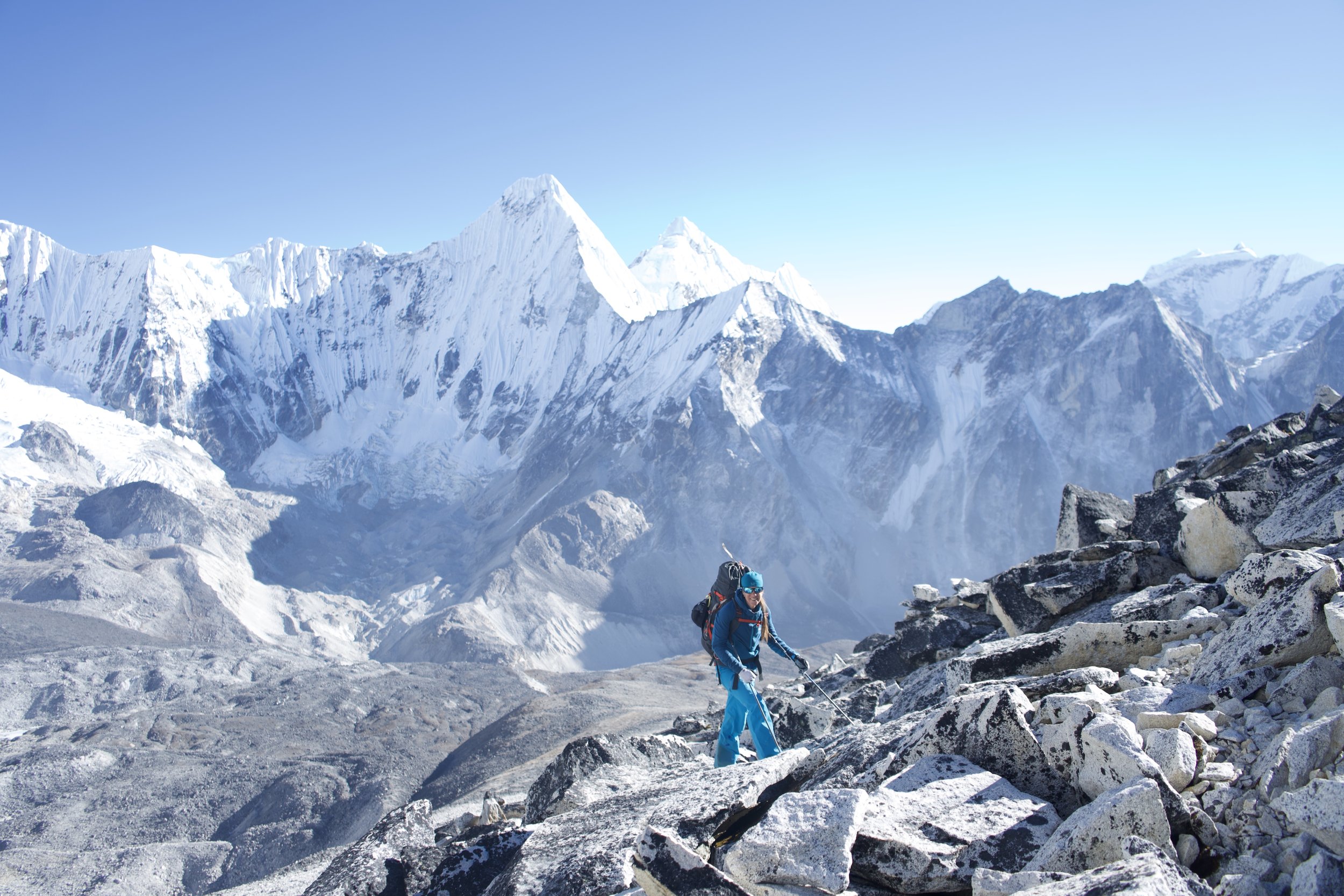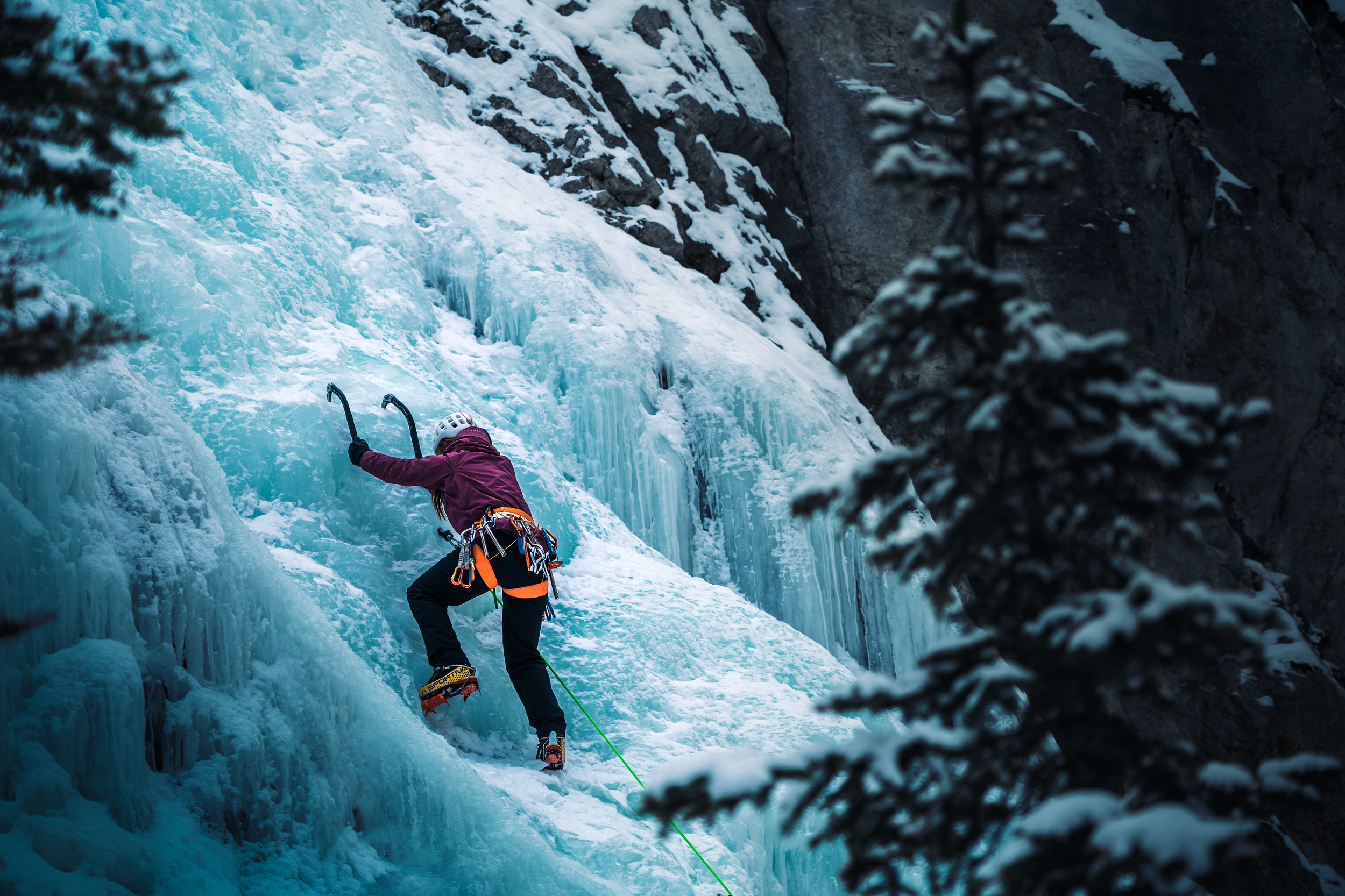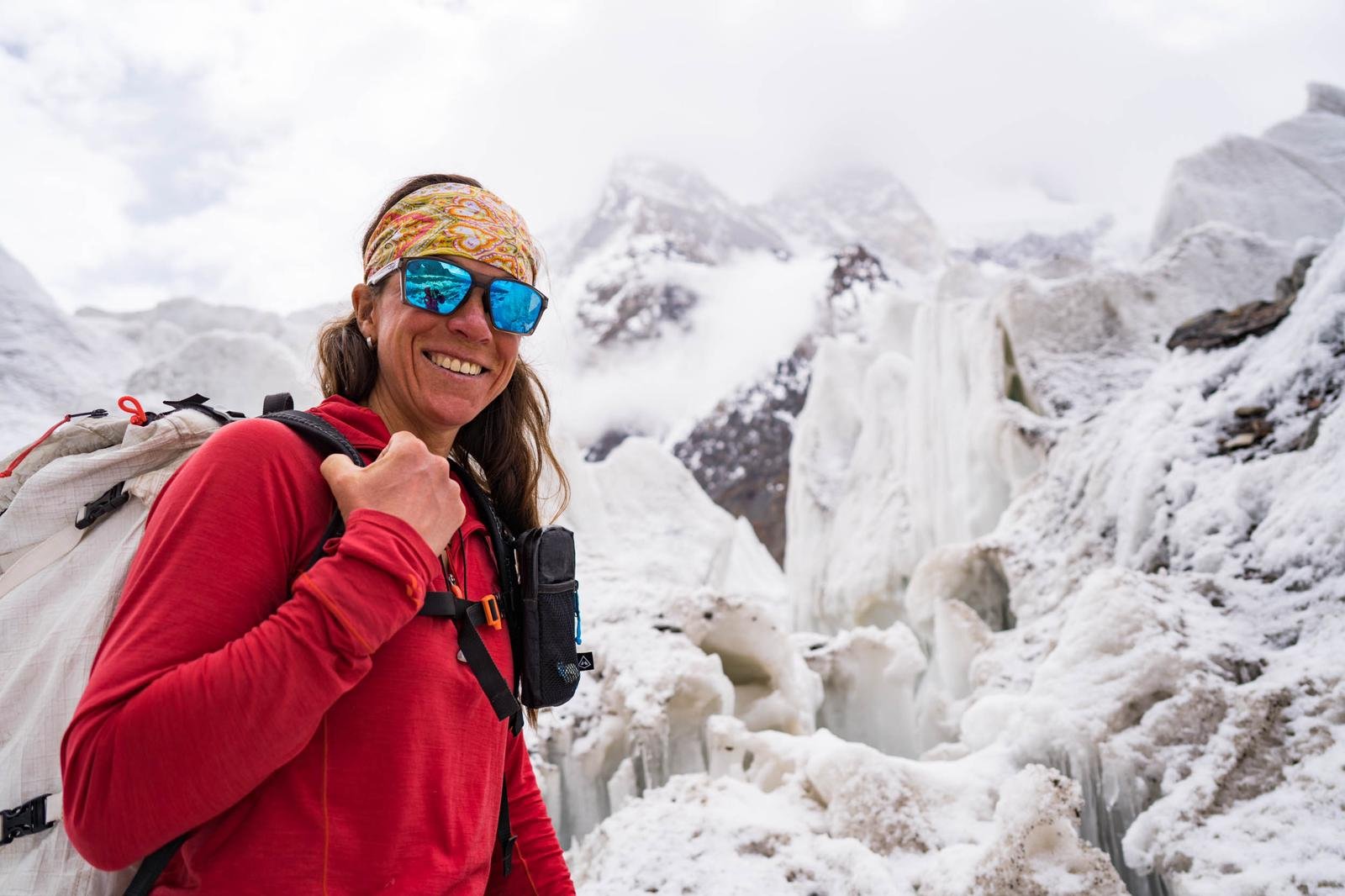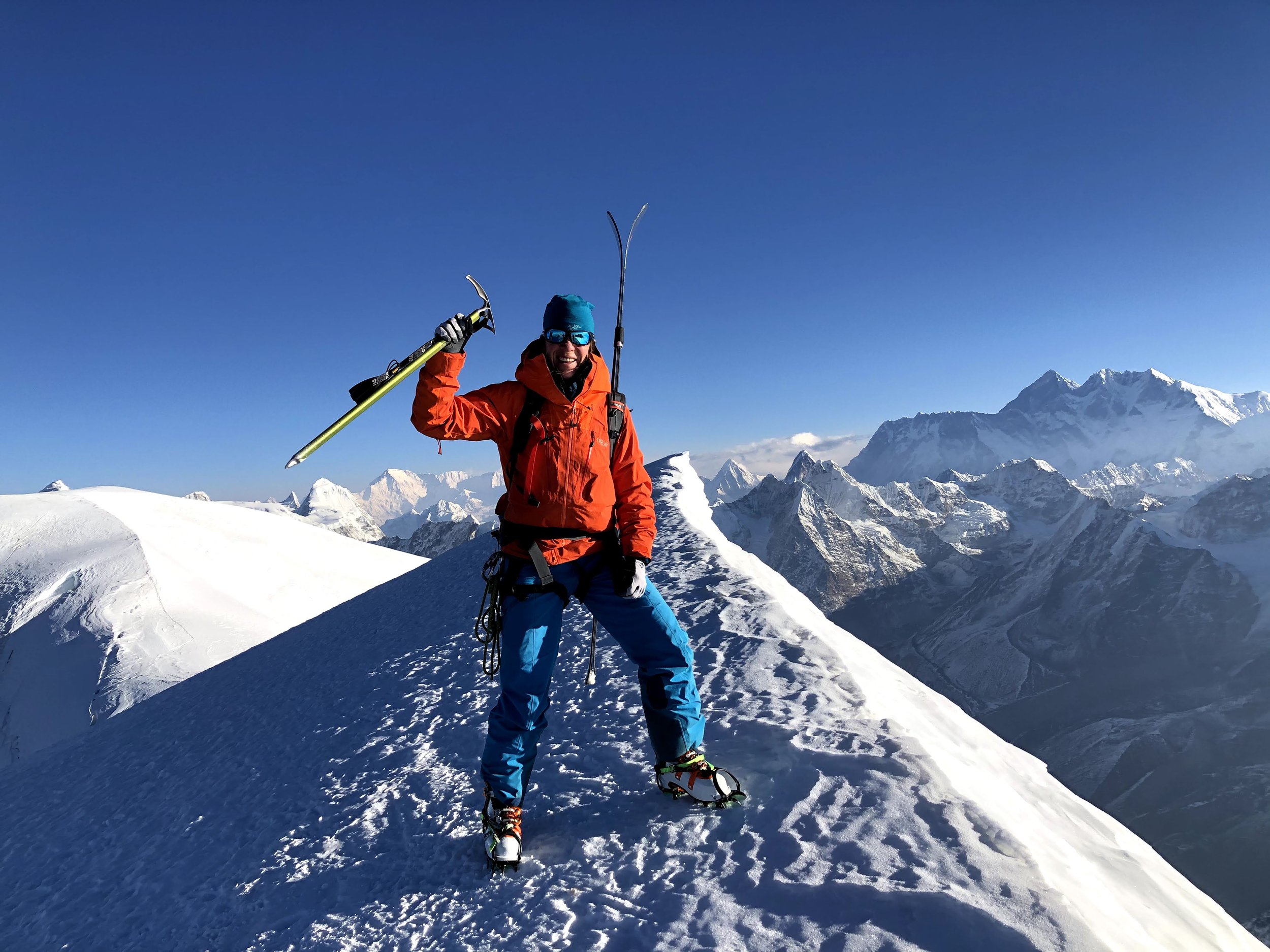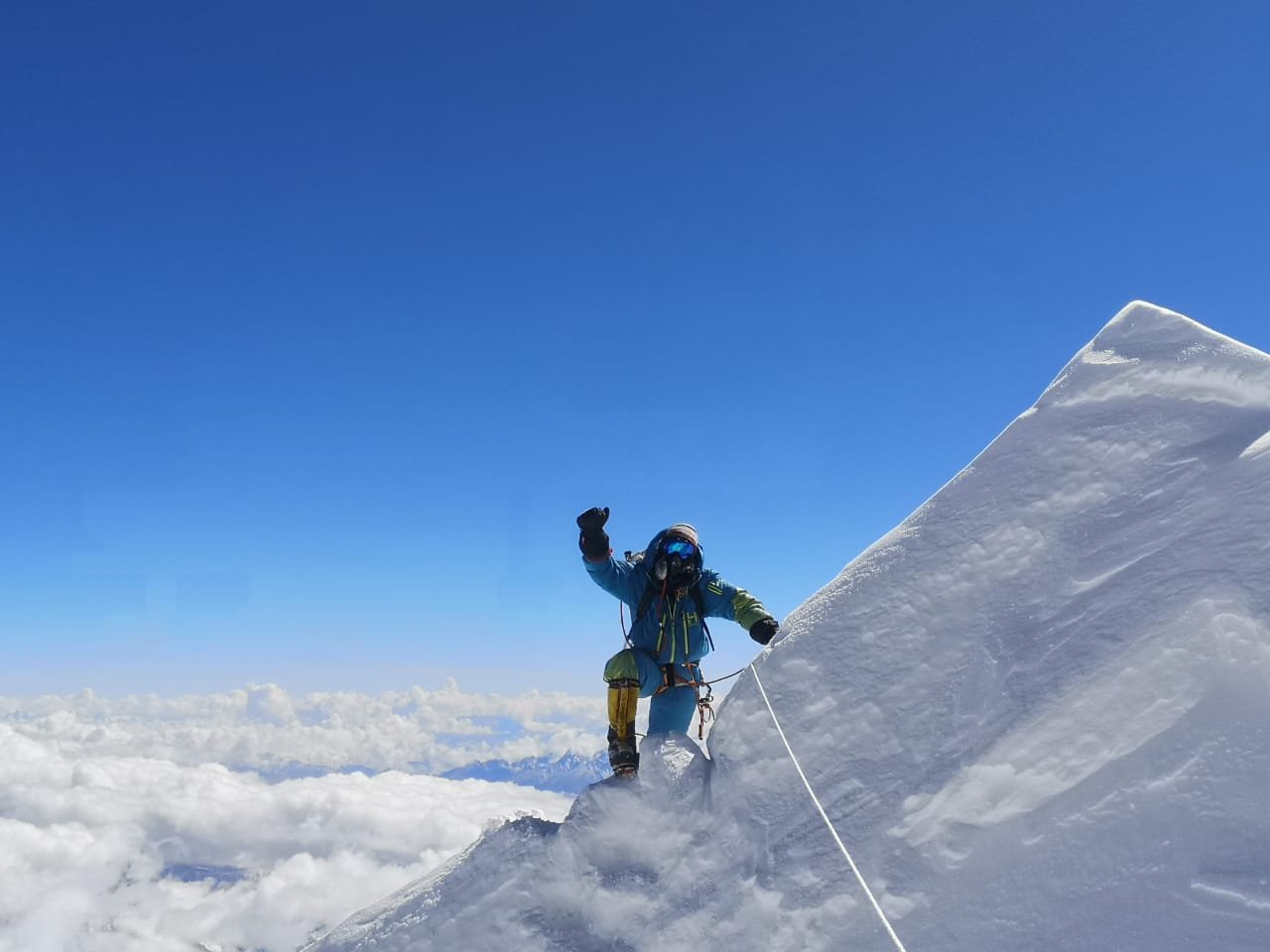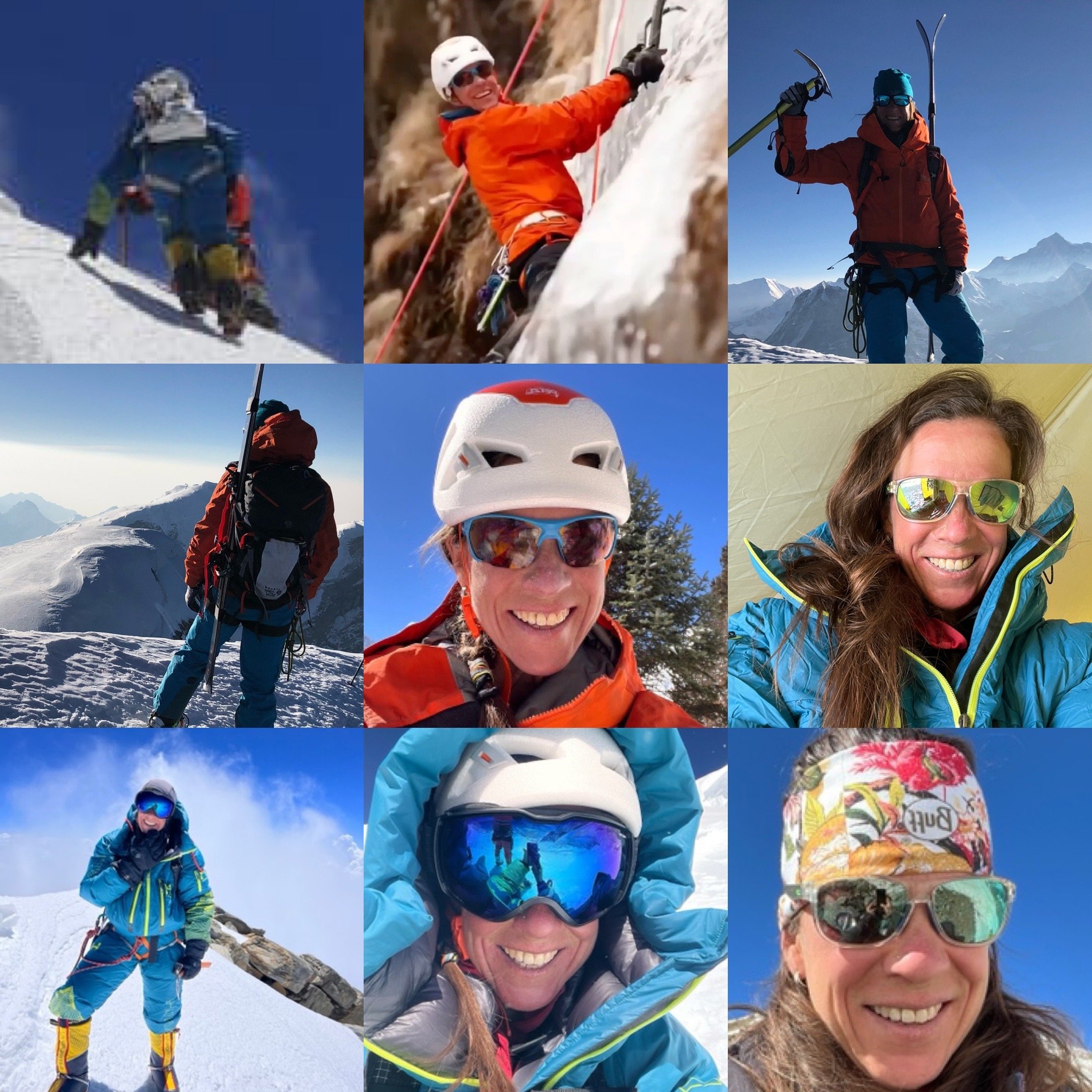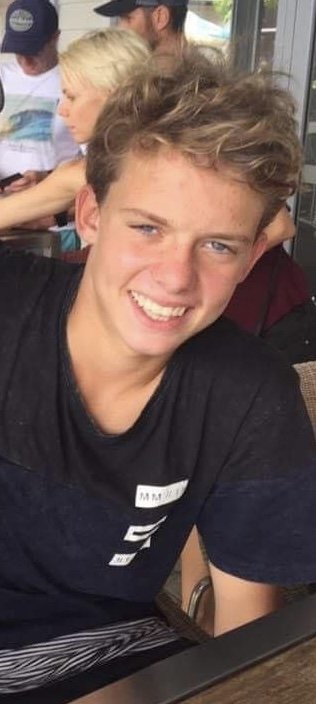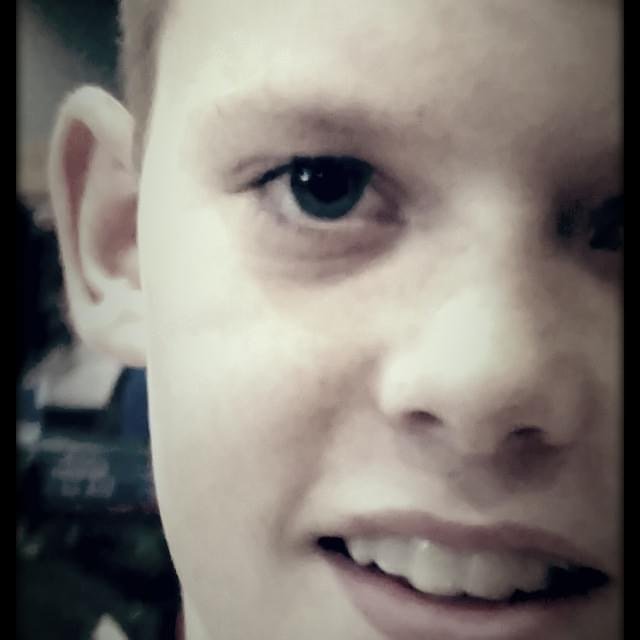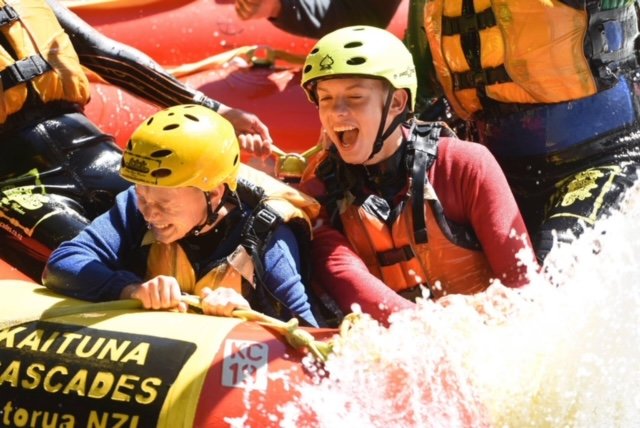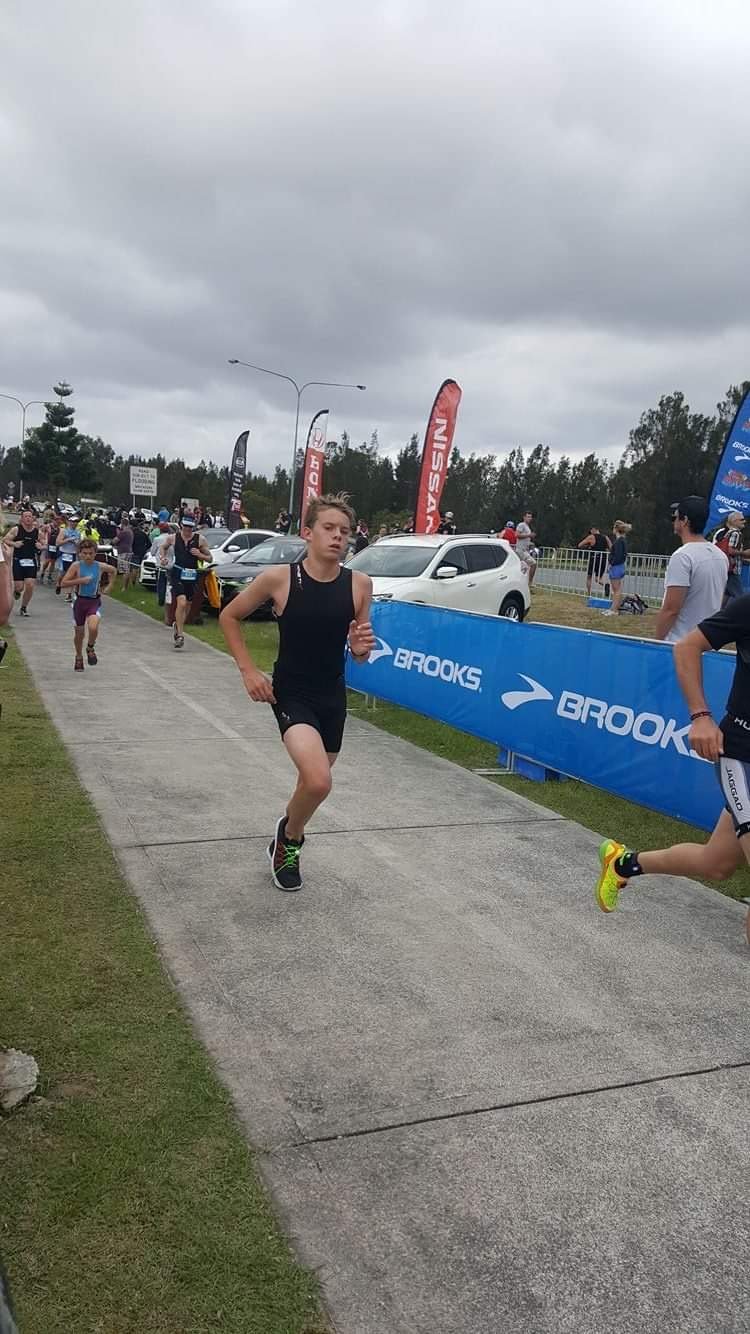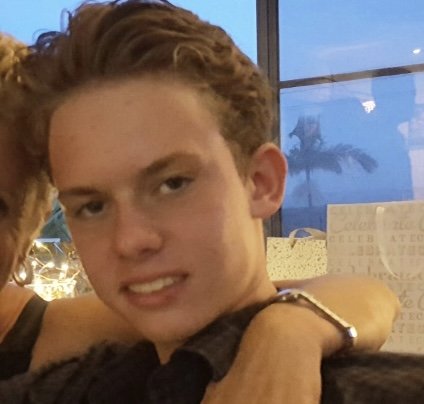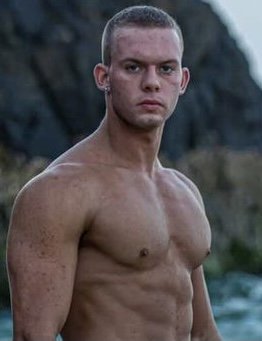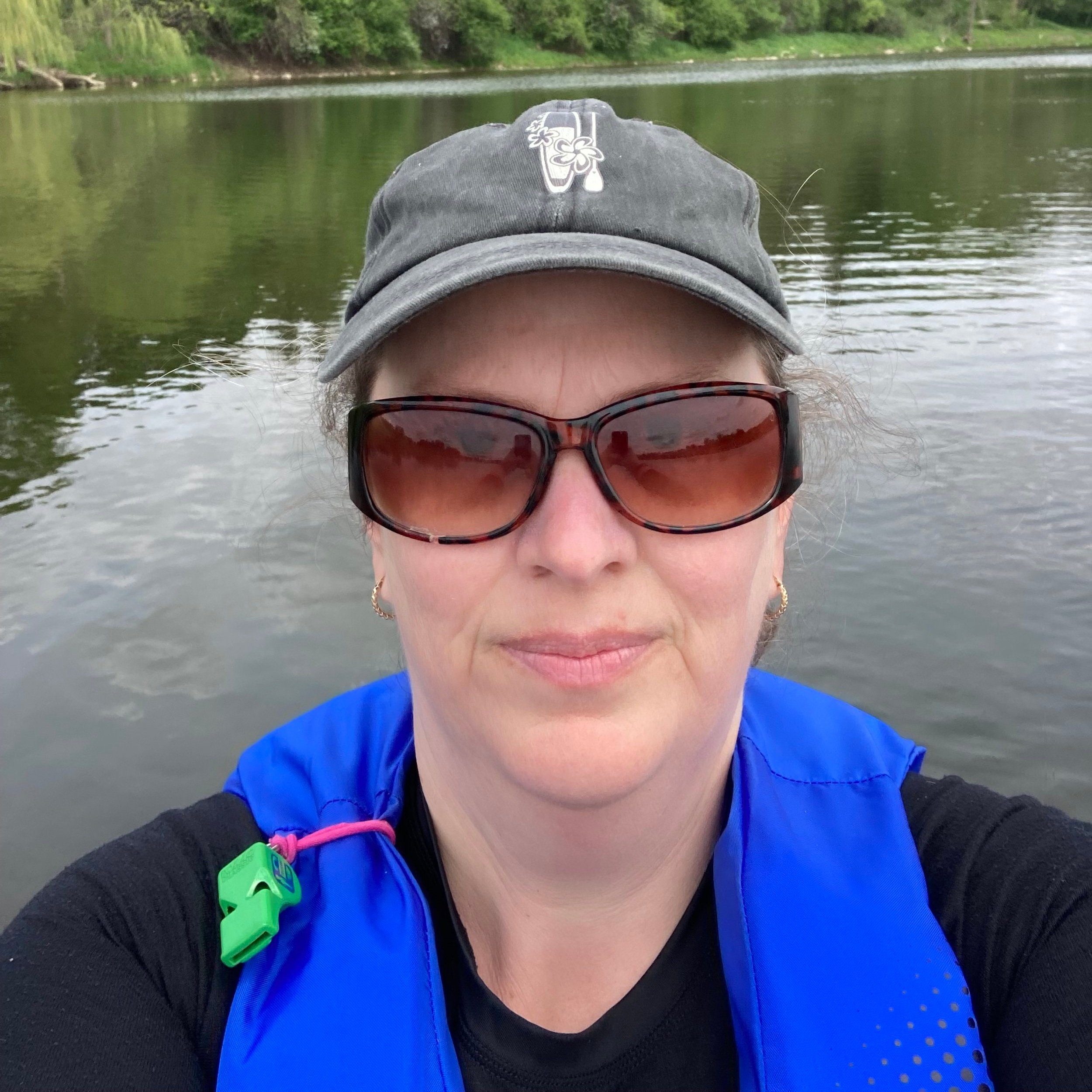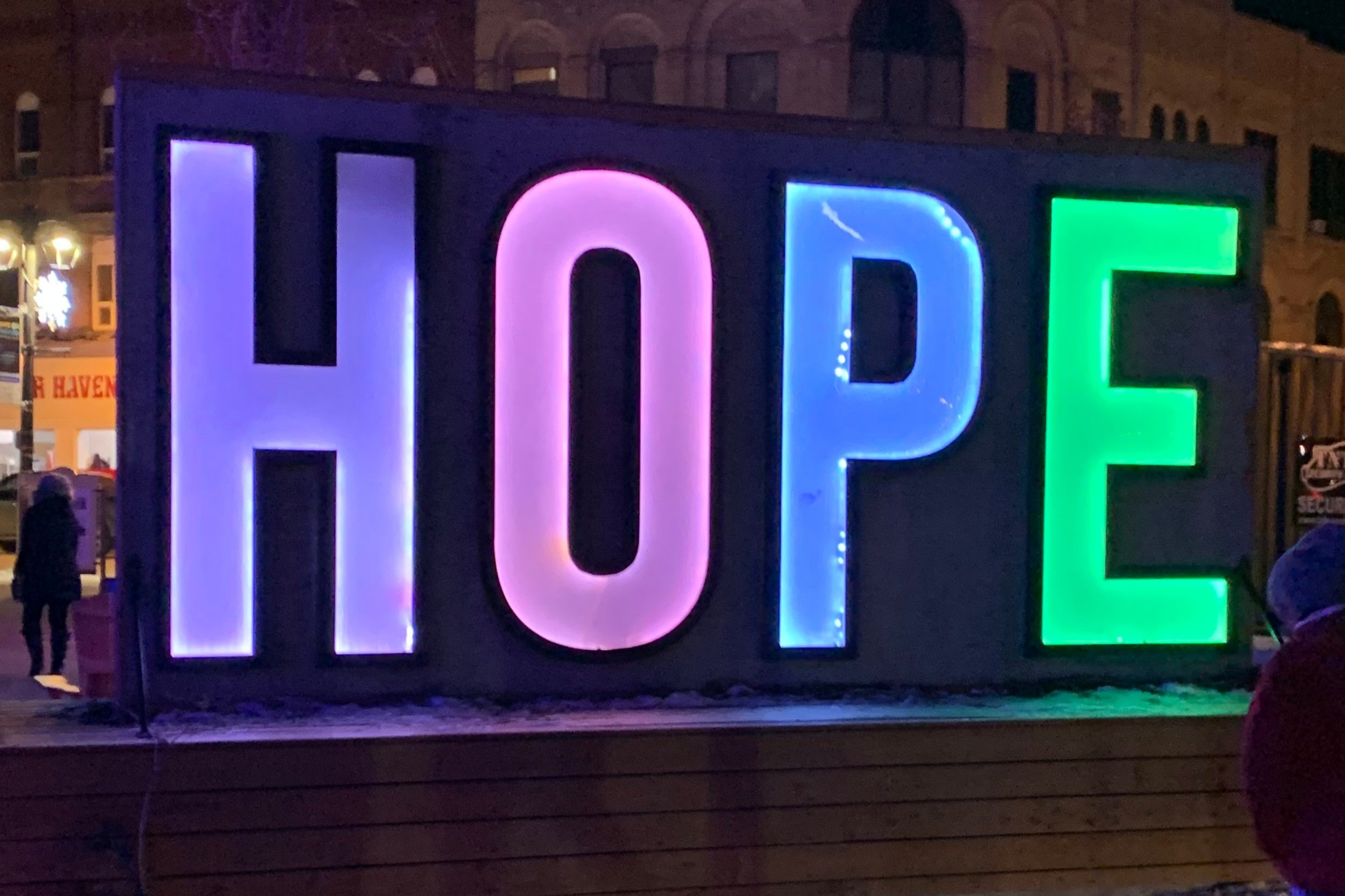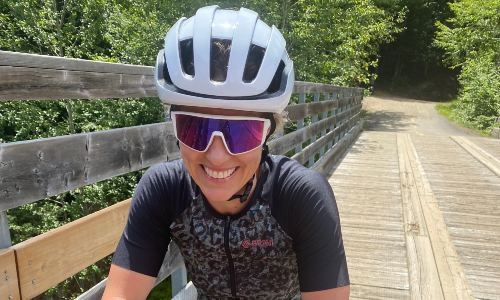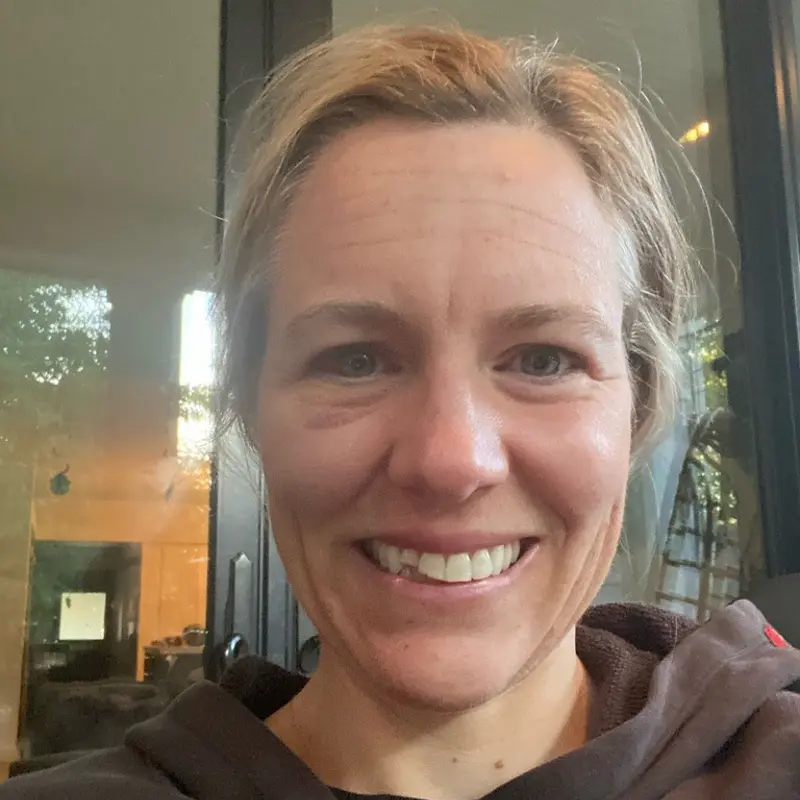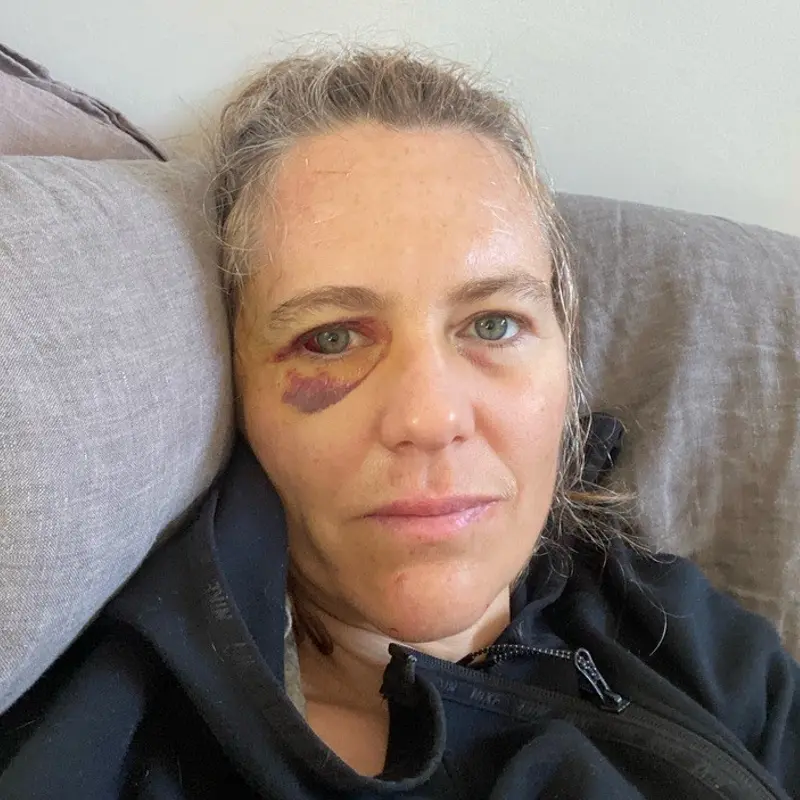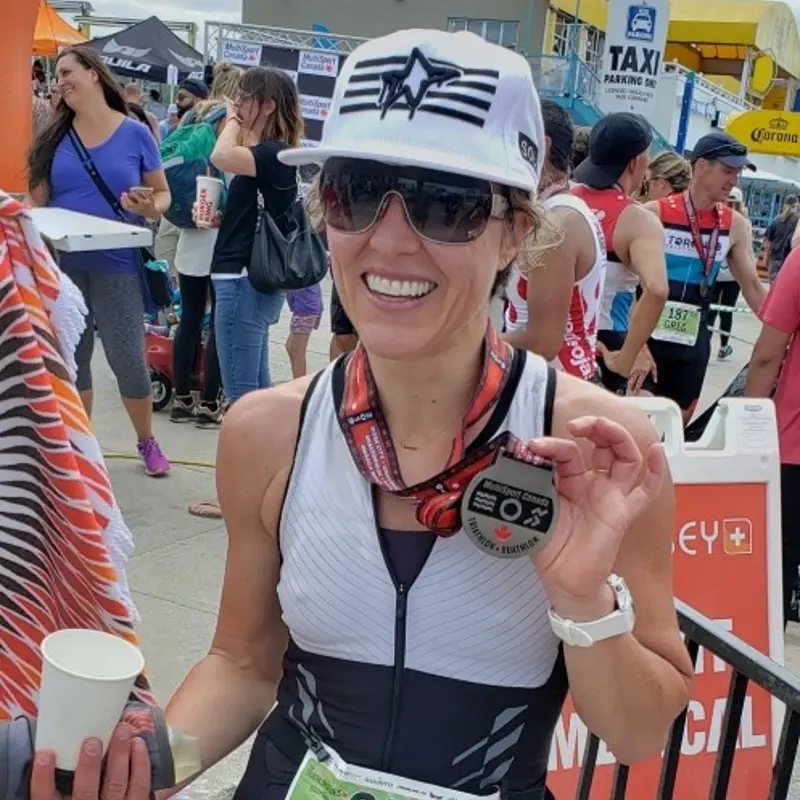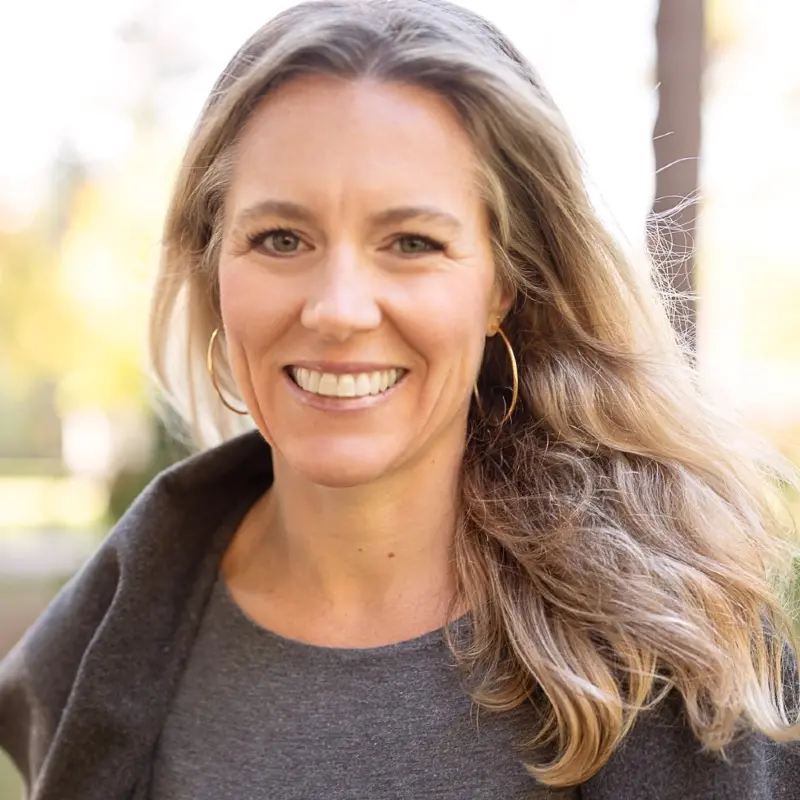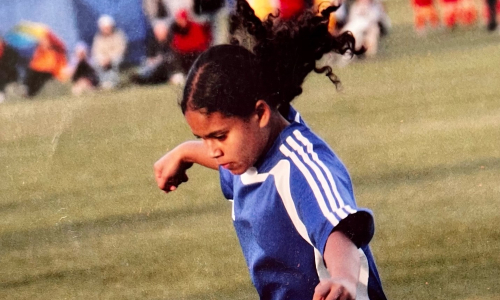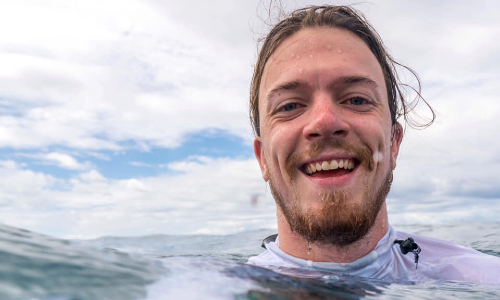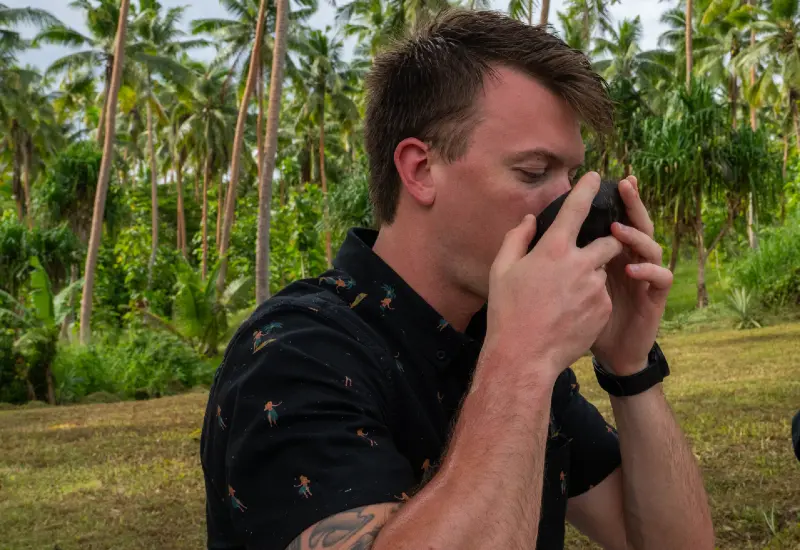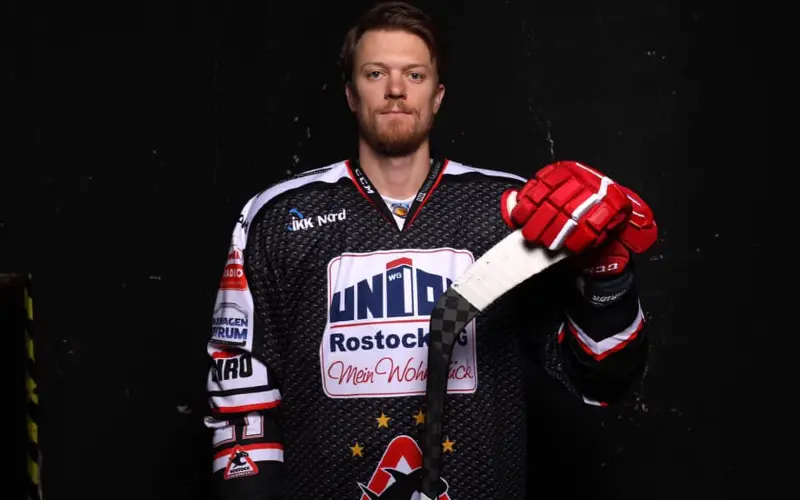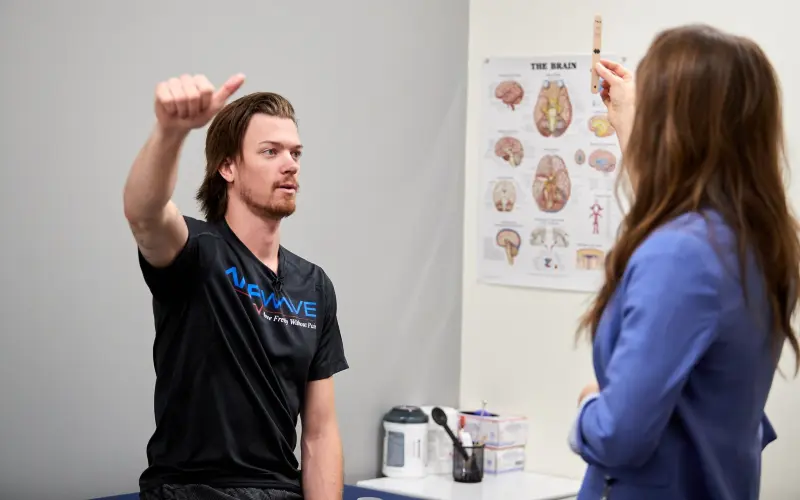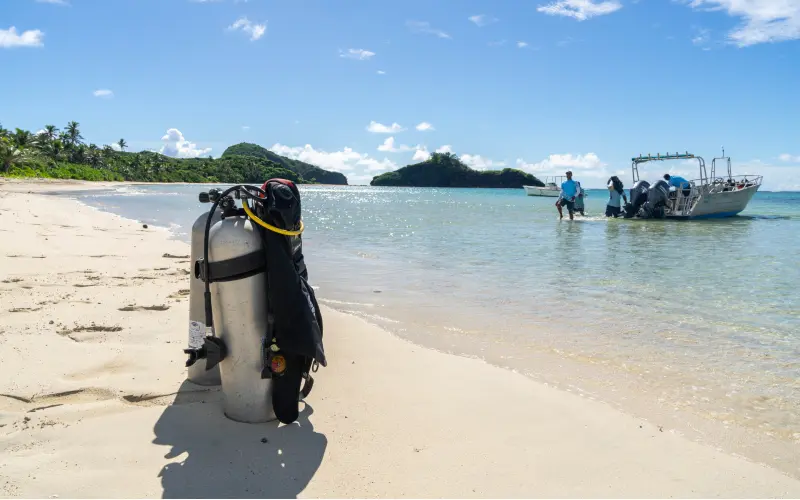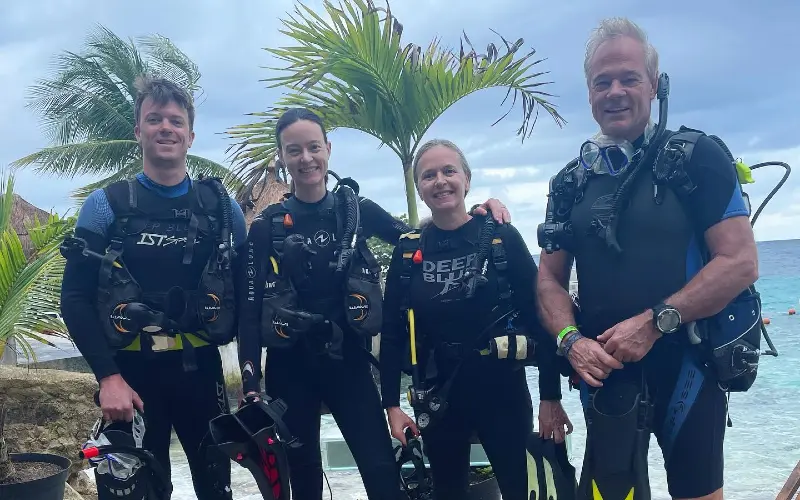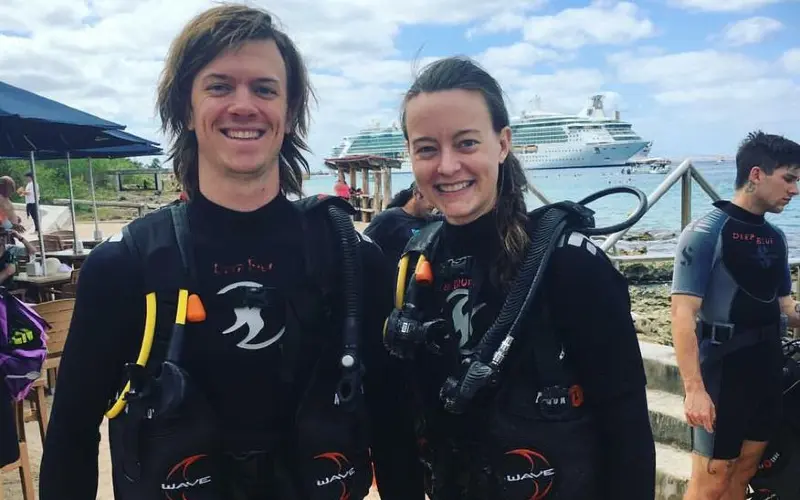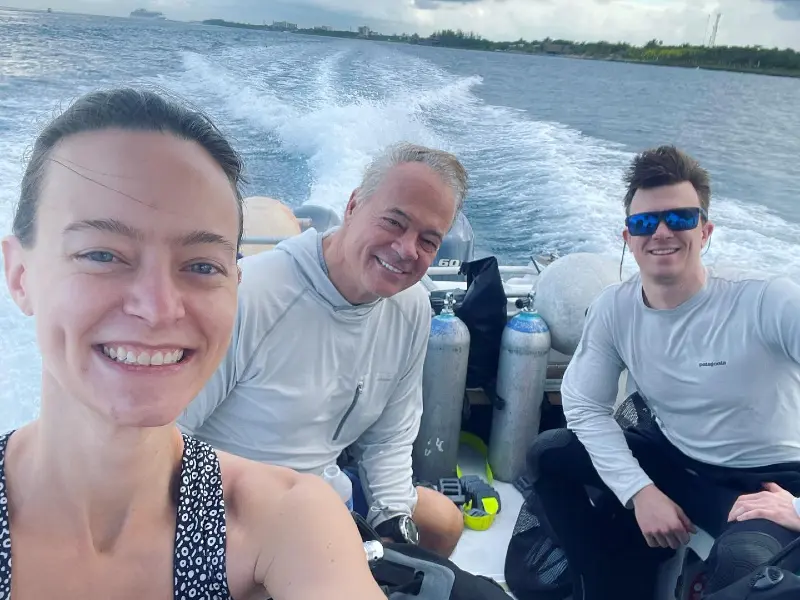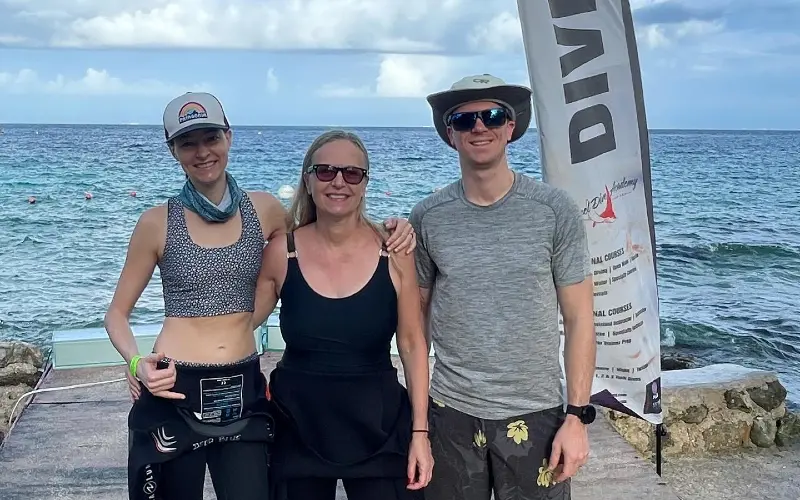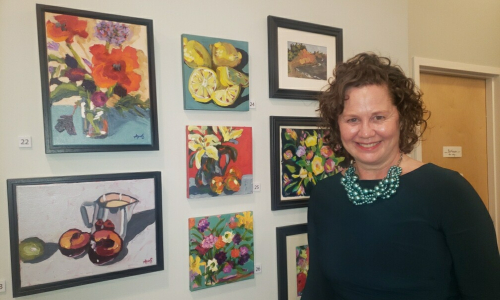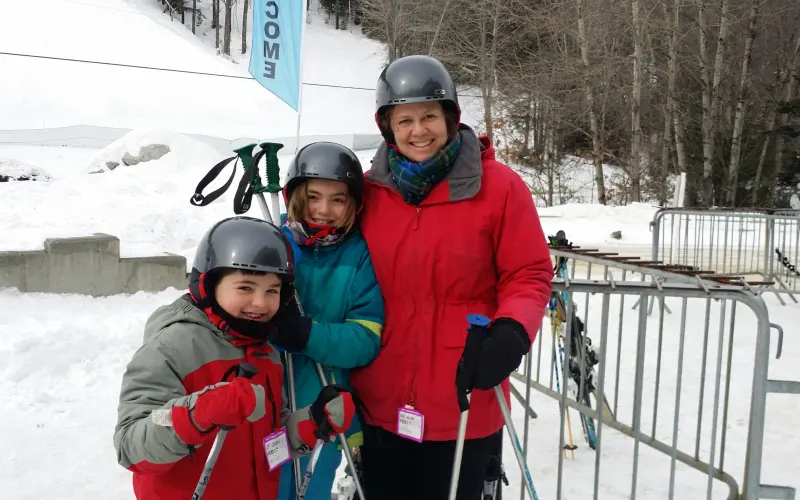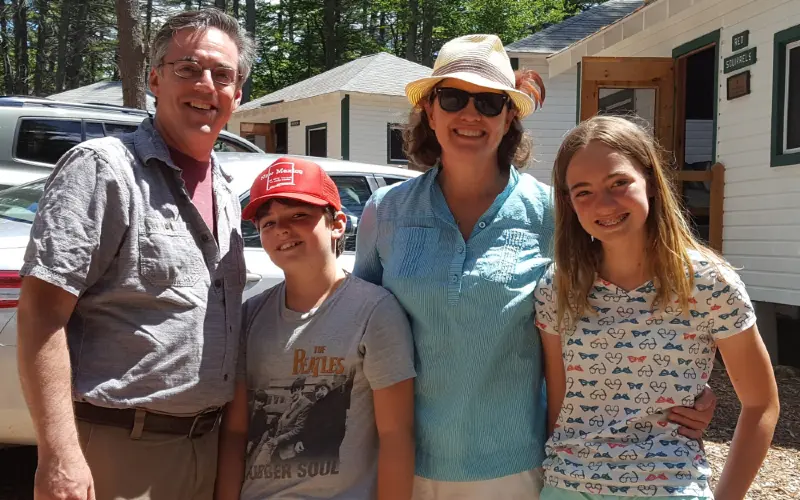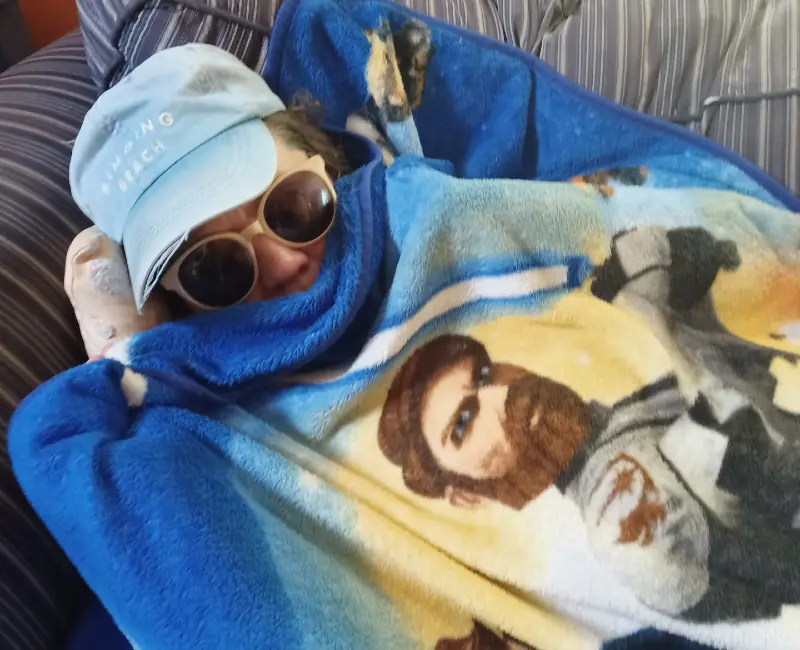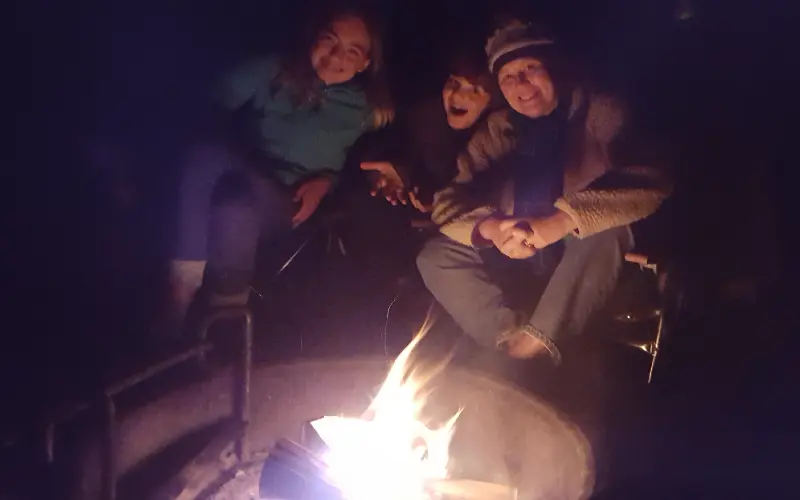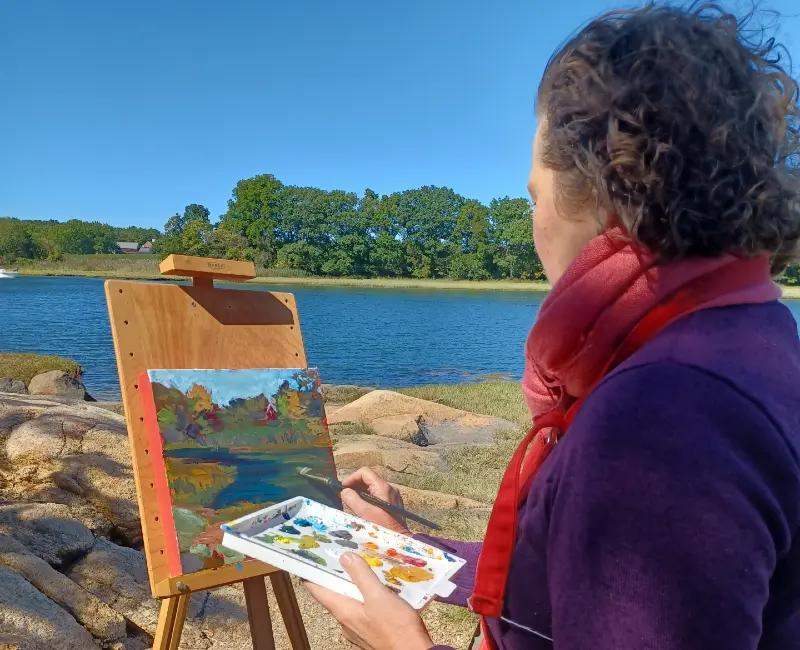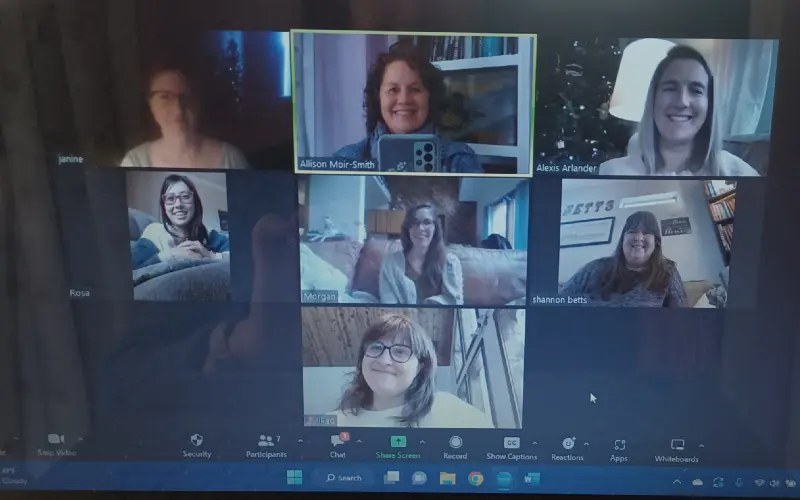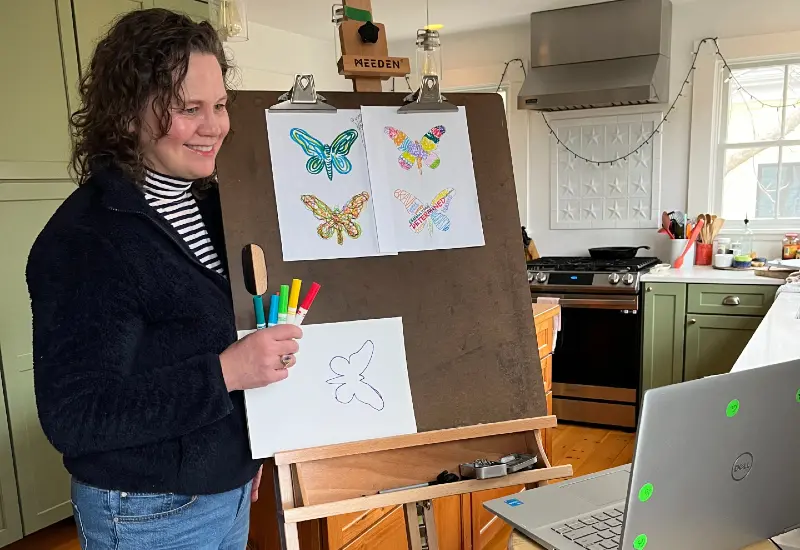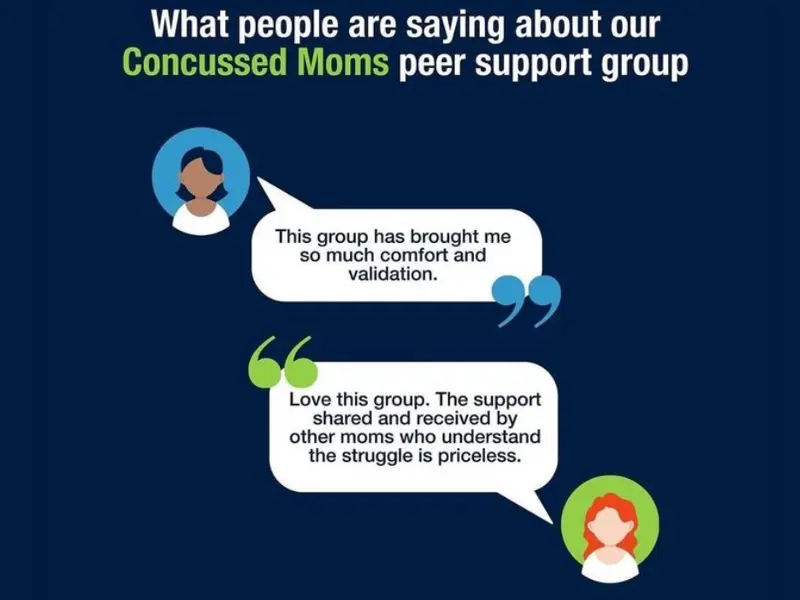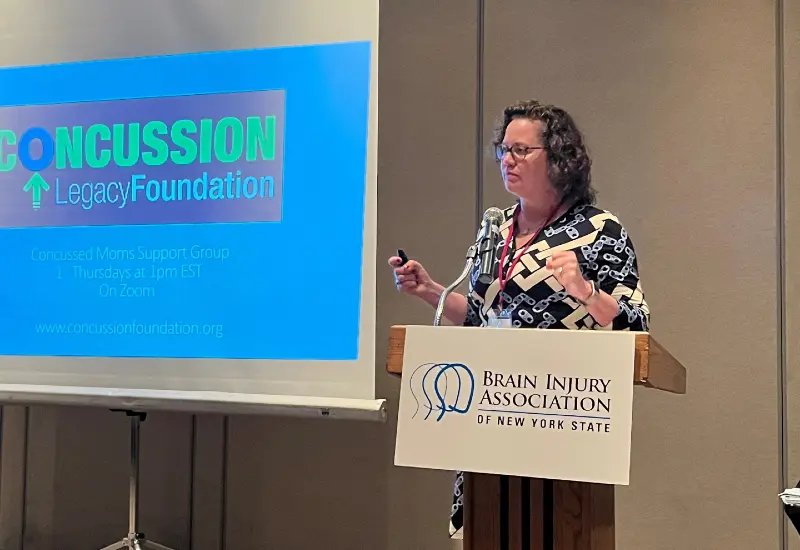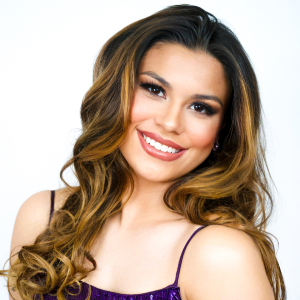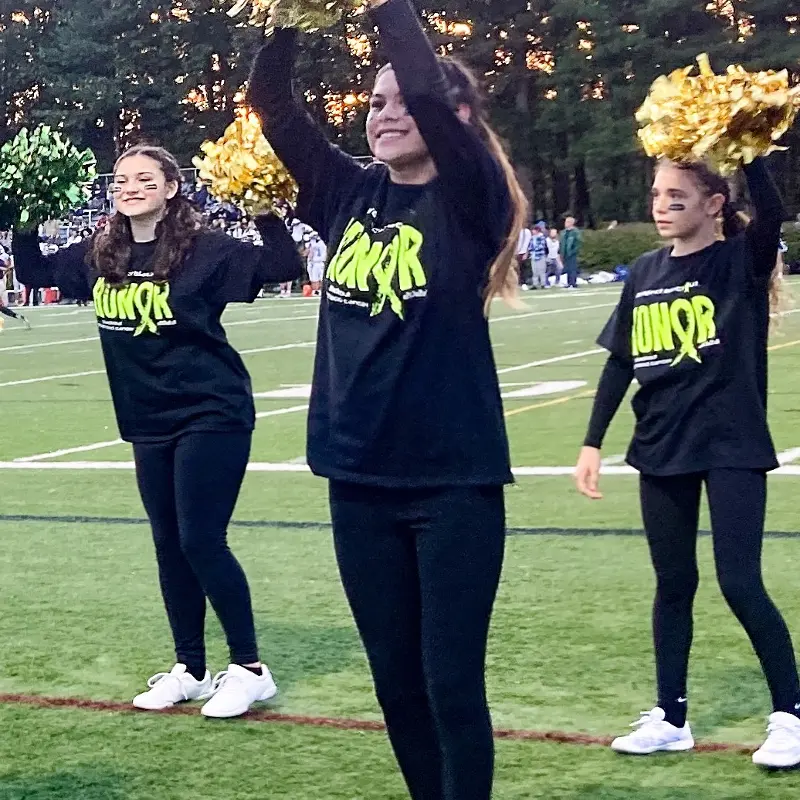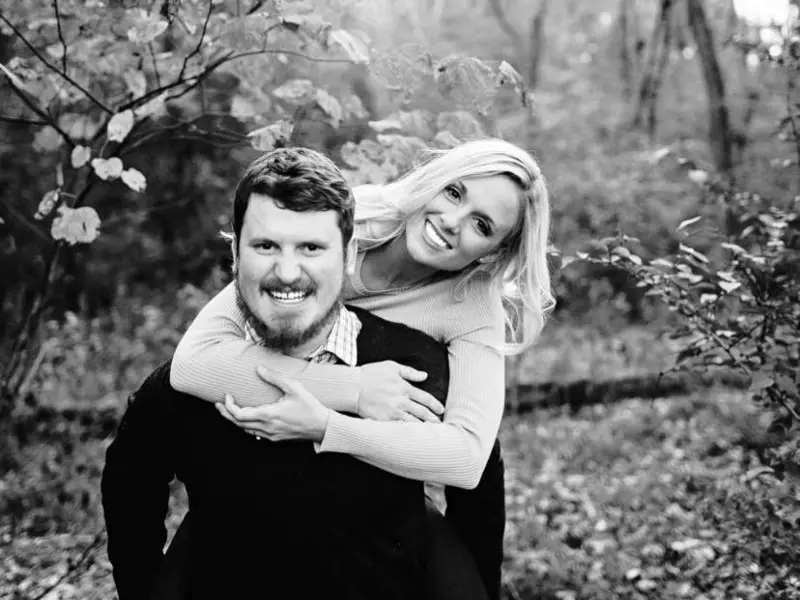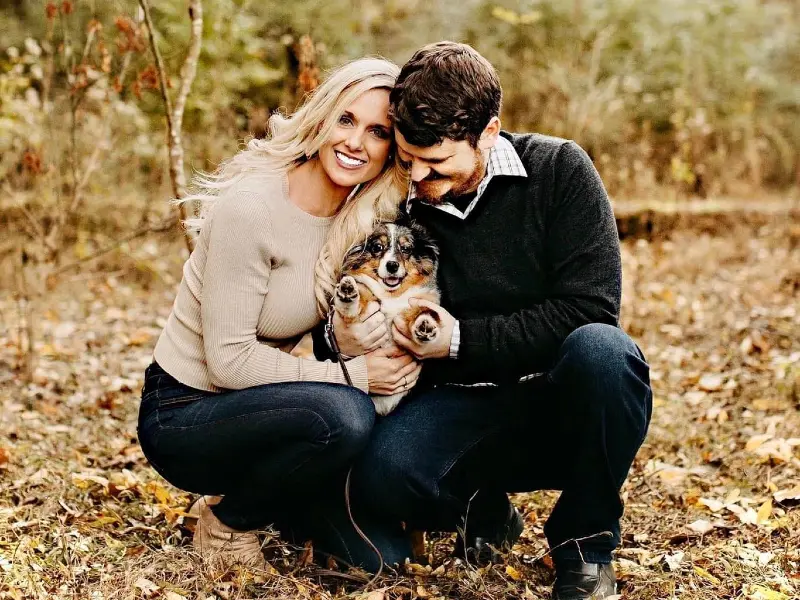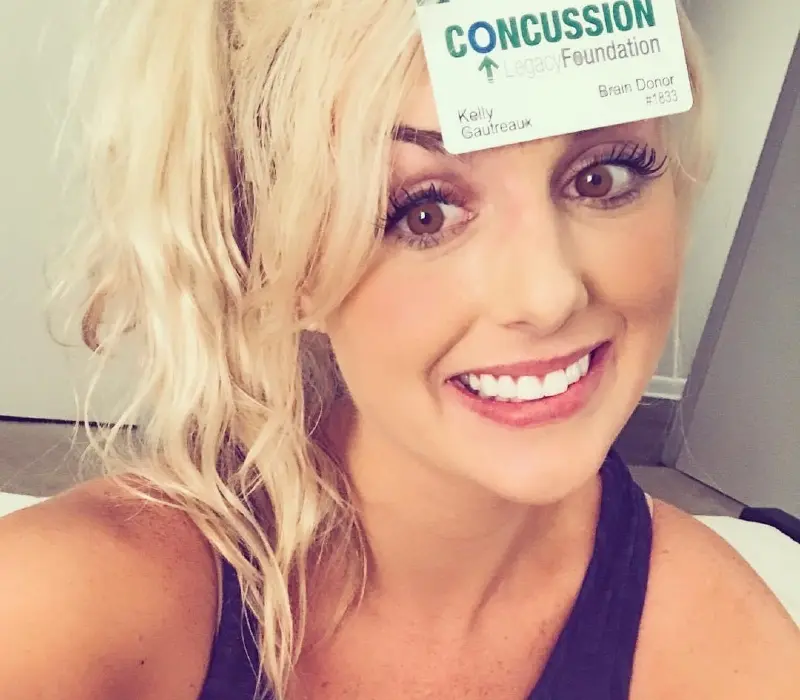**Trigger Warning**
This piece mentions suicidal ideation. If you feel like you are in crisis and need someone to speak with, please call Talk Suicide Canada at 1.833.456.4566.
For SMS text support please text 45645.
In my younger days, when I witnessed the world through youthful, impressionable eyes, I found sports to be a perfect outlet for me to fuel my competitive spirit, and to enjoy the riches of being physically fit, while being active. The first sport I tried was hockey and I found success in it. However, upon my family moving to a smaller community when I was 12 years old, and not having hockey as an option because of the move, my pursuit of an athletic outlet switched to basketball. After a few years of playing that, I realized I was interested in pursuing an individual sport; a sport where I alone determined my own successes and failures. Not long after that realization, and together with my attraction to the sport of boxing, most notably the incredible demands the sport has on its athletes to maintain a significantly high fitness level, I joined one of the two boxing clubs in the city I lived just outside of.
My introduction to boxing came with much motivation, and significant work ethic. After just my first workout at the boxing club’s facility, I realized I was a quick study, and I immersed myself into the training, deciding that I wanted to achieve success at boxing more than anything in the world. I trained and worked out every day, either at the club, or at home. Home was more for road work, and the club was where I would develop my boxing skills.
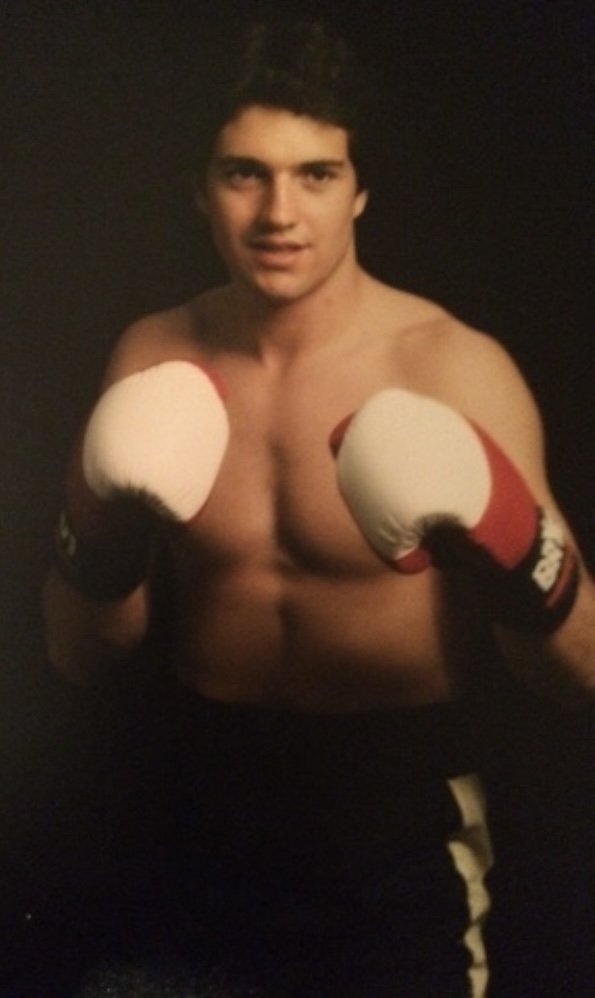
The coach at the club trained me by making me hit a heavy bag, participate in many hard sparring matches, along with skipping rope, and other exercises regularly, always with sweat pouring down my face. I worked hard, sometimes to the point of passing out, especially when I trained in the summer months, when the temperature outside was extraordinarily hot.
I always worked energetically because I wanted to win and wanted to be first, “That’s the most important thing,” the coach preached. I completely bought into his philosophy. The coach worked me harder and more vigorously until I thought I could not take it anymore. Then, he would remind me to appreciate the physical discomfort. “Be a little bit uncomfortable, at all times. When life becomes really rough, especially in the ring, you will already be familiar with that feeling,” being his mantra.
The message embedded in my training was to always go at it to the extreme. It is the price one pays for winning. Of course, there were days when I questioned what the point of it all was. Especially if all the training I was doing ended in a loss during competition, or if I did not get out of the sport what I was putting into it. I did feel that if I were in the best physical shape I could be in, the better the chance I had to win. This type of thinking also decreased the chance of getting an injury in a sport that was known for its very serious injuries. That was the way I thought back then.
The boxing coach was very dedicated and lived and breathed the sport 24 hours a day, 7 days a week. I found myself going to the club’s training facility on weekends and holidays too, as I knew he would help me train at any time. I was dead set on being in the absolute best shape I could be in, so that I would win and be invincible in doing so.
Ego played into my mindset as well. I wanted to be a hero. I wanted all the glory that goes with being at the pinnacle of a sport that only a few could master. I wanted to represent my club and city positively at tournaments, and my country at the Olympics and other international events, if I were so lucky to compete in them.
I won a lot of my bouts, but as my time competing went on, I lost enough, and injured myself ample times to have a more realistic approach to what my future in the sport would look like.
Admittedly, when I lost, I was upset and felt like I had been robbed of an opportunity for distinction. After a loss I was ashamed to be around other people, especially when the results were published in the local newspaper. Of course, the losses also included greater concern regarding the multiple and hard punches to the head I was receiving; made worse by the reminders given my seemingly endless suffering of headaches.
In a bout at a simple boxing card in a city not far from my club’s location, I also lost, but that loss was the worst one I ever experienced, and became the inciting incident which triggered the challenges I am dealing with now.
Two fighters were going at it. One, myself, had features covered in blood after receiving multiple shots to the face. My nose was broken, one of many broken noses I received in the years I spent as a boxer. Yet, on this day, I kept fighting, despite the blood and pain I was experiencing as a result of the shots to the head. My opponent, a kid slightly younger than myself, was working hard, with sweat and blood bathing the both of us. He was the aggressor, and countered my back-peddling boxing style. Move in, throw a punch, or combination of punches, then immediately move away for distance and safety, being my strategy. My opponent banged combinations onto my skull with great accuracy. My head jerked back as his punches to my frontal lobe landed multiple times. Although there was significant pain in receiving the blows, the punches were ignored, and I continued to compete, despite my getting hit frequently, and being various points behind on the judges’ scorecards.
Every now and then I would get in a shot to my opponent, which was what I was in there to do, however all that did was prolong the battle, and the hard punches I was receiving. He definitely got the better of me. The end came when he threw a quick and very solid straight right to my left temple, that I did not see. I felt a thud. I heard a full buzzing sound. I sensed my balance being very off. My body bounced off one of the three ropes surrounding the boxing ring, and I collapsed onto the canvas covering the flooring of the ring. I landed a few feet from my corner, which was a good place to end up, as it allowed my coach to very quickly assess the critical circumstance I found myself in. Thankfully, he did not hesitate when he threw in the towel, ending the ordeal.
As if I had been in a bad car accident, the hours and days after the knockout are still memorable and fresh in my mind. I was knocked out in the afternoon, on a very cold winter day in 1986. I do not recall being checked by a physician after the loss. I simply went into the dressing room, changed into street clothes, and then returned to the hotel that myself and the other boxers competing were staying at overnight.
My mind was distracted by a gash on my chin that was so deep that I could feel the bone. My chin had been sliced wide open after a clinch in the bout, where my opponent threw an uppercut on the break, which landed square on the bottom of my chin, and cut it. Along with the broken nose that I described earlier, I now had an open wound that needed stitching. Prior to me telling my coach that I should perhaps go to the hospital for what ended up being 18 stitches, I vomited in a plastic garbage bag in my hotel room. Once finished, I tied the end of it, and placed it outside the door of my room, and let it sit in the freezing cold, for it to be picked up eventually by housekeeping. I did not go back into my room as soon as I dropped the bag, however. Instead, I stood in the frigid air, taking it in as it helped soothe the sharpness of the pain inside my head.
My coach drove me to the hospital hours later, after the last bout of the boxing card had taken place. The doctor who attended to me simply stitched me up. There was no concern, and no discussion regarding the punches I received that made that mess, also causing obvious head trauma resulting in me being beaten unconscious. The priority was to fix the visible injury.
The boxing protocol after a knock out was a suspension of competitive bouts for a month, however my training regime was not affected. I could train normally, with intensity, and I could participate in hard sparring. In other words, the more things change, the more they stay the same.
Once home the next day, I picked up my training routine as if I had won the bout, and as if I had not even been touched, never mind knocked out cold. I trained despite the headaches and grogginess, which this time lasted a long while, and I was now dealing with another in a long list of concussions, as this was not my first, not by a long shot.
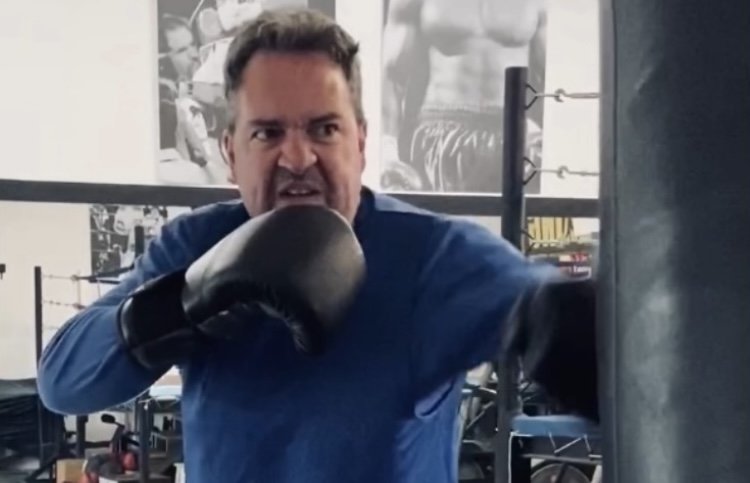
Now, 37 years later I have to deal with the after-effects of receiving way too many hard punches to the head, and not having someone suggest that I should take care of that before anything else.
At that time, I was mindful of the serious consequences of receiving concussions as a result of participating in a sport, but trained harder as a way of disguising or distracting the thought of it. Every fight I was in, whether I won or lost, dominated, or was being dominated, I received severe punches to the head, and when training and participating in hard sparring matches, received more blows, just days after being concussed in a different competitive bout. Now that I am older, the injuries I received then, and my ignorance and the ignorance of others who never even hinted at taking time away from competing and training, have created changes in my behaviour, which are very hard to control, if I am even aware that they need to be managed.
About four years ago, I was sitting at my desk in the school I taught at when I received an email from a car dealership. It was promoting a sports car that was a new addition to its fleet. It was a beautiful European inspired sedan; red, with an engine that could reach significant speed very quickly. I was smitten by it. As a young man I had a sports car but got rid of it because I felt I was not using it enough to warrant keeping it. Now though, it was very appealing. As my thoughts regarding owning it grew, the sooner I purchased it, the better. At no time did my financial situation ever play into my narrow thinking. If there was a way, and I knew there was a way, I would own it. I already had a vehicle, and a very good one at that, which had very few miles on it. But my impulse suggested I buy the sports sedan. I could not control the urge to purchase it. It was the focus of my existence.
The first moment I sat in the car at the dealership I knew it was essentially bought. When I went through the purchasing protocols, it did not matter what was being offered, I agreed to it. The car was priced at $50,000, but I did not even think about the costs for extras like taxes, protective coatings, or the interest rate that I agreed to, which was quite high. My mind was gripped on its purchase and what I would do with the car once I owned it. The price ended up coming in at around $70,000 when all was signed and the purchase completed.
The first few days of ownership were amazing. It was brand new and it was everything I dreamed of when owning a perfect vehicle. It felt so good in fact, that a week later I negotiated the purchase of an SUV for my girlfriend, who needed a change of vehicle as hers was getting older. Again, I was so locked into purchasing a brand-new vehicle for her, that I signed and purchased all the extras offered by the dealership. The end result was another vehicle, this time costing around $60,000.
At that time as well, my daughter was about to turn 16 years old, and I had spent considerable time teaching her how to drive. She was very motivated to become a good driver and she passed her driver’s test on the first try. Now that she was legal to operate a motor vehicle, I again took the opportunity to buy her a car, her first. With that one, I spent $15,000. Again, without any concern for the finances involved.
In one fell swoop I had spent an incredible $145,000 on three vehicles, two of which I gave to other people to drive. I would simply pay the loans, registration, and the insurance on them.
A month later I noticed that my bank account was dwindling at an alarming rate. At first, I was confused as to why such a flush of funds was happening. That is when I finally realized what I had done, and that is when my already problematic anxiety and depression shifted up a notch, and a realization that the severe blows that I had received during my boxing career were affecting my rational ability to think things out properly.
In 2015 I experienced a significant mental compromise, which changed the trajectory of my life, that I am constantly adapting to, even up to this minute. However, the years before the mental compromise were extremely challenging as well. During my post-secondary education, I learned to focus and work hard to overcome deficiencies in my ability to remember things being taught. I had to really concentrate on the materials being instructed in order to retain the information. I was never a good test-taker during that time, as trying to remember significant volumes of information in the short-term was very challenging. However, I was able to successfully pass everything and achieve good grades, but the work to achieve that was significant. The work ethic that I placed onto myself while boxing continued into my academic efforts.
My first university degree was in Theatre, where I somehow managed to memorize significant amounts of dialogue and blocking schemes while participating in many theatrical productions. I challenged myself to master and deliver the performances by keeping the script close by, writing notes on every page of it, and reading it over constantly in order to memorize, capture, internalize and maintain all the information from it, and perform it to audiences, without it in my hand, night after night. Moments when I was not on stage though, I was in the dressing room going over my script, so I would not forget anything.
As mentioned, in 2015, after working in the challenging and stressful role of a school teacher for a number of years, and after living through a change in life circumstance, I had a compromise that was significant and required eventual hospitalization, as well as a few medical leaves of absences from my workplace in the years since. Unfortunately, the medical leaves resulted in much stigma placed upon my capacity to live a normal life, even though I had a celebrated career up to that point, and great relationships supplementing it. Stigma only added to the significant challenges while coping with, and overcoming severe bouts of anxiety and depression; circumstances that no one deserves to be burdened with.
Now, I see my psychiatrist and psychologist, along with other medical supports, regularly. Obviously, all are well aware that I impulsively purchased vehicles in the $145,000 range.
Unfortunately, this amount was and continues to be way more than I can afford, and after the monthly payments have cleared my bank account, I do not have enough money to live off. I do not know why I purchased the vehicles, as my brain impulsively found some kind of reasonable logic in the decision-making, which caused me to sign all the documentation needed to make the purchases, with three different banks lending me the money.
There really is not much a medical practitioner can do to help that specific situation, other than to promote the idea of getting rid of the debt in some way. That in itself is a lot harder than it sounds, and a challenge that I am still trying to find a path to. In the time spent once I realized what I had done, getting rid of the financial burden, became an impossible task.
I am constantly investigating ways to rid myself of the enormous debt that I accumulated. Unfortunately, without any luck. Fixing mistakes can be tricky, especially when having to cope with anxiety and depression on top of the problem at hand. Everything I did to try and correct the mistake reminded me of the mistake. When trying to correct the misstep, I often found myself encouraged by possible situational conditions that could resolve the issue, only for it to be slammed back into my face by the source of the proposed resolution, shortly thereafter.
I also became acutely sensitive to criticism, something that I had managed quite well, given that I was a teacher, and susceptible to criticisms on a daily basis. I found myself secretly trying to correct the mistake by seeking as little help as I could, as I felt ashamed that an impulse to spend an enormous amount of money, led me into making my battle with mental illness worse than it already was. I canceled my Facebook and Instagram accounts, because people are rude on them, and when they try to help, they simply suggest useless, blunt, off-the-cuff statements that lack any kind of detail or knowledge.
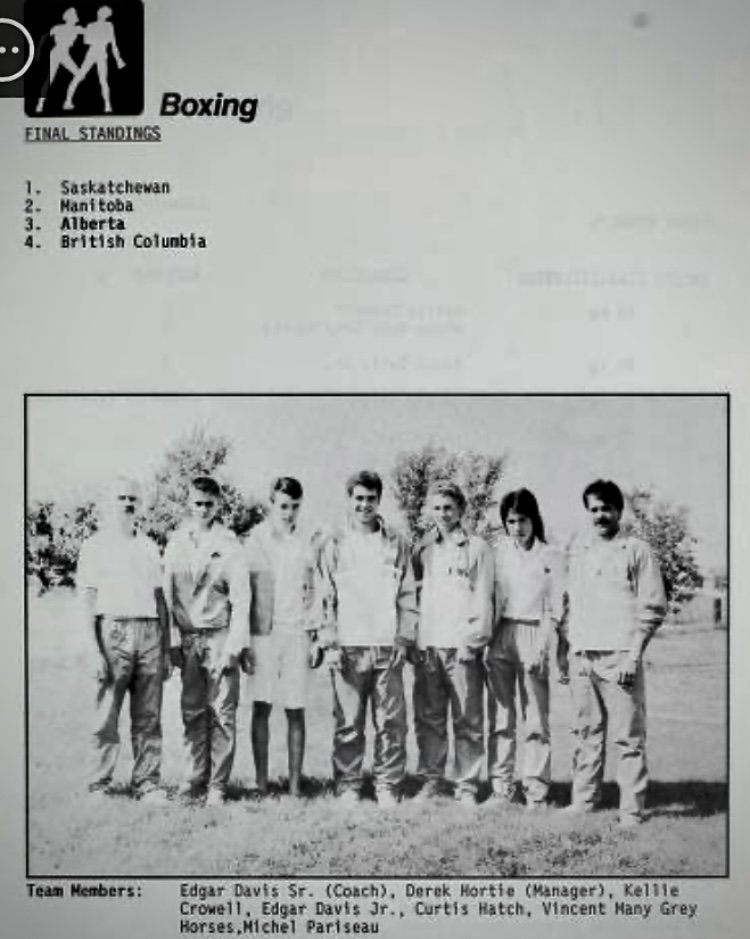
I continue to struggle with memory issues. They have gotten worse. In the last few years I have to write everything down, then take screen-shots of the written note, along with placing important, upcoming items into my phone’s calendar, or I will forget them within minutes. The years after 2015 when teaching, I would go through stacks and stacks of sticky notes, writing every little task down and pasting them onto my desk, as reminders that I needed to complete them. I would even write on a sticky note, “Get more sticky notes.”
I used to be a huge movie connoisseur. A few years ago, I built a media room in my house as an example of my need to consume as many films as I possibly could, in the comfort of my own home. Now though, I cannot make it through even a 90-minute movie in one sitting. I have around six movies and I currently have two books in queue that I have to watch or read, but in increments of 20-minutes here and 20-minutes there, as my concentration on one subject matter for a sustained amount of time has seen a decline.
My girlfriend and daughter continue to drive and take care of the vehicles I purchased them, but the red sports sedan I bought sits in a garage most of the time. I find that when I operate it, I become paranoid that it will get damaged, or it will accumulate too many miles on it for it to have any value, if someone were interested in purchasing it from me at some point in the future.
After I described to my psychiatrist my terrible error in judgment, and the impulsivity that I acted on, my thought-process shifted to possible consequences of such a massive purchase by convincing myself that eventually when all the money I have, had been expended, that I would lose not only the vehicles to the bank, but my house as well, and I would end up homeless and living on the street. I began rationalizing that thinking and imagined myself living in that condition. I would observe homeless people in my neighbourhood, and their daily routines. They seemed to move about, not going too far away from a general location within a few city blocks. They appeared to wander, and then stop and rest for a while. Eventually, they would get up and move about again. They would repeat this pattern all the time, occasionally stopping to chat with others experiencing the same circumstance. Interestingly, as a basic human trait, the need to have personal items remained, so they would gather things and place them either in bags, or in shopping carts, and then drag them along as they roamed about on a typical day. I envisioned which part of the city I would take over, and imagined myself collecting bottles to take to a depot for a few dollars here and there.
After rationalizing my future living conditions and the need to be resilient when occupying that situation, along with convincing myself that it would eventually be a reality, I would experience more periods of imaginative thinking, where I envisioned how uncomfortable the thought of being homeless would be, and reassured myself that the better choice would be to simply die, and not experience the struggles and the unbearable lifestyle homelessness would bring. Death seemed made up of a lot of nothingness; which was a whole lot better than suffering in filth and simply existing somewhere outside.
Lately though, with my seeking out charitable organizations and speaking to many of their professional personnel who understand the plight of those who suffer with mental illness, I have gotten more motivated to find ways to feel better, and learn to live with a disability. I have set aside this year to utilize as many strategies that I can, to feel healthier. I am already on my third medication in order to try to find the right med and correct dosage for my chronic anxiety and depression, as I will be a consumer of medication for the rest of my life, and have gotten acquainted with the side effects that accompany it. One of the more concerning is that of weight gain. As a boxer, my priority, and something I did well at, was to always maintain and make weight prior to a bout. Now, I find it very hard to control. However, if I can combine the correct med, regardless of its side effects, along with having the proper support infrastructure in place, I will definitely be in the right spot, going the appropriate direction.
I continue to work alongside medical supports to help with the anxiety, depression, panic, paranoia, suicidal ideation, and numerous negative thoughts that placed me in hospital wards, and have caused me to utilize extended medical leaves to battle the demons. It is helpful having measures in place to recover properly with time off from my workplace, but my salary has now been reduced to around 75% of what it normally would be. This brings about even more challenges, and tests my ability to adapt to yet another condition, when coping with a medical issue.
I still get headaches, and new aliments creep in once in a while too. I had to combat a bout of Vertigo a few months ago. That was uncomfortable. It felt like I had been punched in the head, yet again. When I attempted to walk, I would stagger to my destination. I spoke to my psychiatrist about it, but luckily it ended up going away naturally a couple of weeks upon its arrival, without the need for any formal medical practice to get rid of it.
Right now, I find that I live within the cliched motto, ‘One Day At A Time’. I cannot think too far into the future because that will create a lot of chaos in my head, and I will jump to conclusions on what could possibly happen to me. It does help to live hour to hour, and day to day, instead of week to week, and month to month. I do what I can to survive and am curious about the world, which helps me live to discover the next day. I live alone so I can easily create calmness in my home. I also attempt to do at least one practical thing every day, whether that be writing, reaching out and meeting with one of my many supports, or simply going for a walk in the neighbourhood I reside in. I also leave myself open to other possibilities, such as group support experiences, which I know would be beneficial.
The many trophies and medals I won when I competed in boxing can now be found in a tote bin, stored under my basement staircase. I never pull them out to look at them. However, my memories of the time I spent competing in the sport never go away. Especially the memories of the many severe blows to the head I received while training and competing.
Perhaps it is my unequivocal trust in the medical profession, and my support of all processes when it comes to my health, that I now offer myself as a “guinea pig” of sorts when it comes to my own medical circumstance, and my need to help others who suffer the same plight. Recently, I pledged to donate my brain to the Concussion Legacy Foundation in their request for a practical means in which to support their research efforts. I find that sort of action on my part as being a logical next step in my experiences as a human being; by medically helping other people in any capacity that I can.
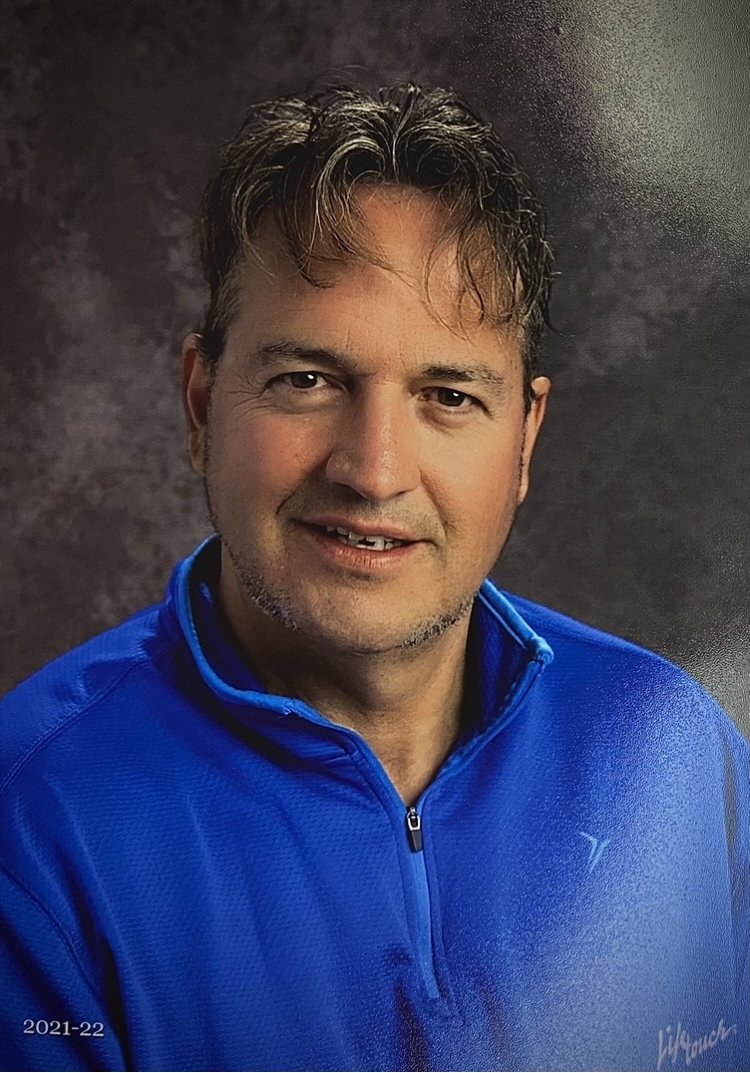
A few years ago, I decided to sign a donor card that is now indicated on my driver’s license. I appreciate words like “generous” and “majestic” that many use when describing donor intent. When I donated my brain and received the proper notification regarding the steps needed to officially do so, I felt overwhelmingly happy by what I am committing to do. For a moment, the constant anxiety and overwhelming depression that is a normal feeling for me presently, went away, if only fleeting, but it went away. I felt the need to celebrate, however my celebration stayed contained in my mind, which was now at ease, if only for a brief period of time. I was able to glow in the prospect of helping the medical world continue to discover more about the brain’s capacity, and what happens to it as a result of injury and continuous trauma.
Still, I continue to press on despite the challenges handed me. I am looking at a career change as I have a lot to offer professionally. My medical supports have all suggested that I switch careers, given the significant stress and chaos that today’s typical classroom teaching environment consists of. I have set forth a path to discover potential new career options where I can utilize the deep skill set that I developed as an educator. Currently, in my motivation to stay productive, I write daily and have volunteered to write for charitable organizations, along with maintaining a personal blog. I find writing to be a very therapeutic endeavour.
Despite the issues I am dealt, I stand pat on the idea of hope. I hope that someone benefits from my sharing of my life experiences, and finds value in what I bring as a person who epitomizes work ethic, tried his best, adapted, made mistakes, suffered, but continues to persevere.
I am looking to connect with others, especially athletes and former athletes, to support one another. If you would like to get in touch, please reach out to [email protected] and they will be able to facilitate a connection via email.
